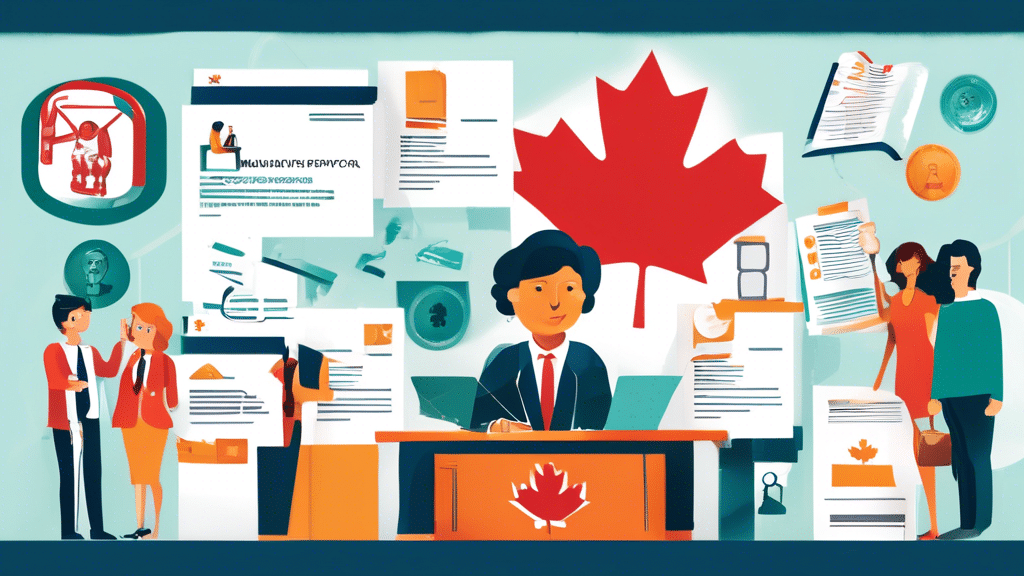Understanding Bankruptcy in Manitoba

Tyler McAllister
Senior Finance Writer
Bankruptcy is a legal process designed to help individuals or businesses overwhelmed by debt, offering a chance for a fresh financial start. Understanding bankruptcy in Manitoba is crucial for residents facing financial difficulties, as it allows them to make informed decisions about their economic future. Manitoba’s bankruptcy laws provide a framework within which debt relief can be sought, ensuring that the process is both fair and transparent for all parties involved. This article explores the essential aspects of bankruptcy in Manitoba, highlighting the pivotal steps and considerations for filing, the legal criteria to be met, and the profound impacts that declaring bankruptcy can have. Furthermore, it sheds light on the available resources and support services that can assist individuals throughout their journey to financial rehabilitation. Whether you’re currently grappling with debt or simply wish to comprehend the legal and financial landscape, this comprehensive guide aims to equip you with the necessary knowledge about bankruptcy in Manitoba.
1. Introduction to Bankruptcy in Manitoba
Overview of Bankruptcy
Bankruptcy is a legal process designed to provide relief to individuals and businesses who are unable to repay their debts. It serves as a lifeline for those who find themselves drowning in insurmountable financial obligations. During bankruptcy, the debtor’s assets are liquidated to pay off as much of the outstanding debt as possible, and the remaining balance may be discharged, offering a fresh financial start. In Manitoba, like other provinces in Canada, bankruptcy is governed by federal laws and regulations, ensuring a consistent and transparent process for all parties involved.
Importance of Understanding Bankruptcy in Manitoba
The complexities of financial distress can be overwhelming, and understanding bankruptcy in Manitoba is crucial for anyone facing financial hardships. By comprehending the bankruptcy process, individuals can make informed decisions about their financial future and take the necessary steps to regain stability. This knowledge is particularly important given the unique economic landscape and legislative framework in Manitoba, which can impact the bankruptcy process. Knowing the ins and outs of bankruptcy can help individuals navigate the system more effectively, potentially minimizing the long-term financial consequences.
Legal Framework Governing Bankruptcy in Manitoba
The bankruptcy process in Manitoba is primarily governed by the Bankruptcy and Insolvency Act (BIA), a federal statute that sets out the rules and procedures for bankruptcy across Canada. The BIA provides a structured process for resolving insolvency issues, protecting both debtors and creditors. In addition to the BIA, the Office of the Superintendent of Bankruptcy (OSB) plays a pivotal role in overseeing the bankruptcy process. The OSB is a federal agency responsible for ensuring that bankruptcies are administered in a fair and orderly manner.
In Manitoba, Licensed Insolvency Trustees (LITs) are the only professionals authorized to administer bankruptcies. These trustees are regulated by the OSB and must adhere to stringent ethical and professional standards. They guide individuals through the bankruptcy process, from the initial consultation to the final discharge. LITs provide valuable advice, help prepare required documents, and manage the liquidation of assets.
Provincial laws also interact with federal legislation in various ways. For instance, certain provincial exemptions allow debtors to retain essential assets, such as a portion of equity in a primary residence, basic household items, and tools necessary for work. Understanding these exemptions can significantly impact the outcome of a bankruptcy case.
Moreover, the legal framework includes provisions for alternatives to bankruptcy, such as consumer proposals and debt consolidation plans. These mechanisms offer different solutions, allowing debtors to negotiate more affordable payment terms with creditors while avoiding some of the more severe consequences of bankruptcy.
Bankruptcy in Manitoba also involves court proceedings as part of its legal framework. The Court of Queen’s Bench of Manitoba has jurisdiction over bankruptcy matters, ensuring legal oversight and resolution of disputes. However, many bankruptcy cases are resolved without extensive court involvement, thanks to the administration and mediation capabilities of LITs.
Understanding the legal framework surrounding bankruptcy in Manitoba equips individuals with the knowledge to navigate the system effectively. Whether seeking relief from overwhelming debt or exploring alternatives, this understanding is crucial for making informed, strategic decisions that align with one’s financial goals and circumstances.
See if you qualify for debt relief

Key Steps and Considerations for Filing Bankruptcy in Manitoba
Declaring bankruptcy can be a daunting process, but understanding the steps involved can provide some clarity and relief. Here’s what you need to know about filing for bankruptcy in Manitoba.
Eligibility Criteria for Bankruptcy in Manitoba
Before you consider filing for bankruptcy in Manitoba, it’s essential to determine if you meet the eligibility criteria. Generally, you must:
- Be a resident of Canada.
- Owe at least $1,000 in unsecured debt.
- Be unable to meet your debt obligations as they come due.
- Have insufficient assets to cover your debts.
It’s crucial to consult with a Licensed Insolvency Trustee (LIT) in Manitoba, who will assess your financial situation and confirm your eligibility for bankruptcy.
The Bankruptcy Filing Process in Manitoba
Filing for bankruptcy in Manitoba involves several structured steps:
- Consultation with a Licensed Insolvency Trustee (LIT): Your first step is to meet with an LIT, who will review your financial situation and explore other debt relief options before recommending bankruptcy.
- Filing Initial Documents: If bankruptcy is deemed the best option, your LIT will prepare and file the necessary documents with the Office of the Superintendent of Bankruptcy (OSB).
- Stay of Proceedings: Once the bankruptcy is filed, a stay of proceedings is automatically enacted, which stops creditors from pursuing collection actions against you.
- Asset Liquidation: Your LIT will identify and arrange for the sale of your non-exempt assets. The proceeds from these sales will be distributed among your creditors.
- Income Reporting and Surplus Income Payments: You’ll be required to report your income during the bankruptcy period. If your income exceeds a certain threshold, you may have to make surplus income payments.
- Credit Counselling Sessions: You must attend two mandatory credit counselling sessions to understand better how to manage your finances and avoid future insolvency issues.
- Discharge from Bankruptcy: After fulfilling all obligations, you can be discharged from bankruptcy. The discharge process typically takes 9 months for a first-time bankrupt with no surplus income.
Key Considerations and Impacts of Declaring Bankruptcy in Manitoba
When contemplating bankruptcy in Manitoba, several key considerations and potential impacts must be taken into account:
- Impact on Credit Report: Bankruptcy will significantly impact your credit rating. It remains on your credit report for six years after discharge, making it challenging to obtain credit during this period.
- Loss of Assets: You may lose certain non-exempt assets, such as properties, investments, or luxury items, to be liquidated for creditor repayment. However, necessities like clothing, household furniture, and tools of the trade up to a certain value are typically exempt.
- Employment Considerations: While bankruptcy does not directly affect employment, certain professions and employers may view a bankruptcy filing unfavorably. It’s crucial to check if your profession has specific stipulations regarding bankruptcy.
- Emotional and Psychological Impact: The process of declaring bankruptcy can be stressful and emotionally taxing. It’s important to seek support from friends, family, or professionals if you feel overwhelmed.
- Legal Obligations: Throughout the bankruptcy process, you will have legal obligations such as attending creditor meetings, providing financial information to your LIT, and making agreed-upon payments if applicable.
While these considerations may seem daunting, bankruptcy can also provide a fresh financial start, which can be liberating and life-changing for many individuals burdened by debt.
Resources and Support Services Available for Individuals Facing Bankruptcy in Manitoba
Manitoba offers several resources and support services for individuals considering or facing bankruptcy:
- Licensed Insolvency Trustees (LITs): These federally regulated professionals are equipped to guide you through bankruptcy and alternative debt solutions. They provide mandatory counselling and act as intermediaries between you and your creditors.
- Credit Counselling Agencies: Non-profit credit counselling agencies offer free or low-cost financial advice, budget planning, and debt management programs. They can help you explore options like debt consolidation or consumer proposals before turning to bankruptcy.
- Manitoba’s Bankruptcy Assistance Program: Managed by the Manitoba Consumer Protection Office, this program provides information and assistance to those struggling with debt and considering bankruptcy.
- Community Organizations: Various community organizations in Manitoba offer financial literacy programs, workshops, and one-on-one counselling to help individuals manage their finances and avoid future insolvency issues.
By leveraging these resources and understanding the key steps and considerations, you can make informed decisions about bankruptcy in Manitoba and take proactive steps toward a more secure financial future.
In conclusion, understanding bankruptcy in Manitoba is crucial for individuals grappling with insurmountable financial challenges. With a robust legal framework in place, the province offers a clear pathway for individuals to seek relief through bankruptcy. Knowing the eligibility criteria and the detailed filing process can alleviate a significant amount of stress and uncertainty, allowing individuals to navigate their financial reset more confidently. It’s essential to recognize the profound impact that declaring bankruptcy can have on one’s financial future, including potential consequences on credit scores and asset ownership. However, the availability of resources and support services in Manitoba offers a lifeline, ensuring that individuals are not navigating this complex journey alone. While bankruptcy is undoubtedly a significant step, it can also serve as an opportunity for a fresh start and a more stable financial future. By arming themselves with the right information and seeking appropriate guidance, Manitobans can take informed steps toward resolving their financial difficulties.
See if you qualify for debt relief
